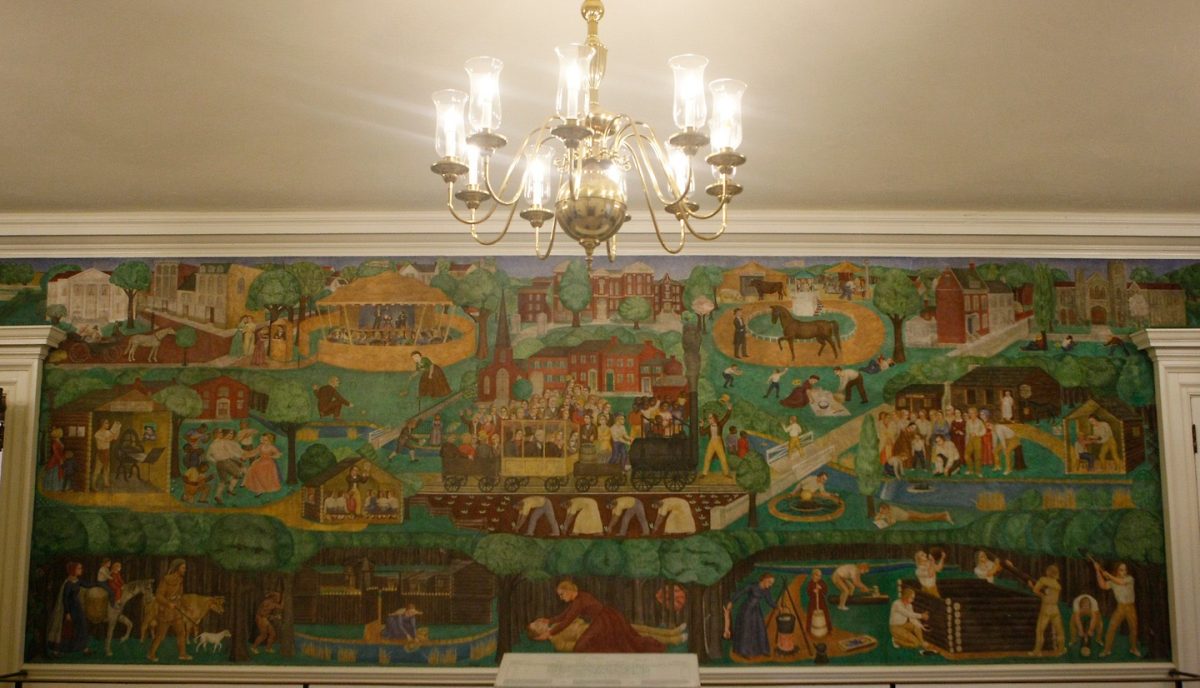As city hall plans its imminent expansion into the county’s surrounding greenscape, no issue feels more pertinent than affordable housing development.
In fact, it ought to be the priority of this city council above all else.
And though some laud the recent decision to expand as a victory for affordable housing advocates, exurban spaces are no place for these developments. If affordable housing was really on the docket, the expansion should never have even been considered.
For those not intimately familiar with this issue, let me provide some context.
Lexington was the first city in the United States to establish an Urban Service Boundary (USB), literally a line drawn in the ground to limit urban and suburban growth to a designated area. In 1958, when the boundary was drawn, it was mainly to protect the interests of horse farm owners and farmers who built Lexington’s economy and didn’t want to butt heads with incoming urbanists.
It’s been expanded a few times, most recently in 1996 which notably added the Hamburg development. But that decision left much to be desired. Only half of the incorporated land was ever actually developed.
I’d bet my hat that will likely be the case again.
In July of this year, the council again voted to expand the boundary. In September, after a testy process of public input and private deliberations, they decided to add about 2,800 acres to the boundary, just slightly above the required 2,700 acre minimum.
Now it seems that the council and planning commission are left to steer this process in a way that prioritizes smart and equitable development with a framework that precludes them from doing so.
On Sept. 12, the Urban Growth Master Plan Advisory Committee opened its doors to commentary from the public on where to expand. I begrudgingly watched the entire session (coupled with drinks and friends to make the medicine go down), to shockingly serviceable entertainment value.
Responses were mixed between advocates donning “Sprawl Hurts us All” merchandise chastising the council for deciding to expand at all and landowners in the proposed expansion areas treating the commission like the Shark Tank and pitching their land for potential redevelopment.
One UK professor noted the rarity of the soil quality in Lexington, which is among the most fertile and unique on the planet. Expanding suburban growth into areas traditionally reserved for farms and greenspace will have ripple effects negatively impacting the quality of central Kentucky soil for farms still outside the USB.
Other landowners, especially along the Winchester Road corridor, desperately did not want their land to be included and potentially bare the environmental costs of surrounding development.
Ultimately, it looks like much of the new land use is going to focus on single family housing and retail. Exciting!
Let’s reflect again on the 1996 Urban Service Area expansion that brought us Hamburg. The average rent there is about $1,265 per month, slightly above the average for the rest of the city. There doesn’t seem to be any dedicated affordable housing beyond one complex for senior citizens (which just broke ground this year and will be very good). If you’ve been there, you know that it doesn’t even pretend to be walkable and is sectioned off by severe wide and fast-moving roadways. By and large, Hamburg’s doors are closed to those looking for affordable housing options.
These exurban and suburban spaces make building affordable housing difficult because they simply aren’t prime real estate for those who need it most. One study from the Fayette Alliance found that housing prices jumped significantly as they approached the USB.
Barring an unprecedented hands on approach to developing the new land within the USB by the council, most of these new developments will not reasonably be affordable or accessible to Lexington’s working class.
The hidden costs to building new housing along the outer ring of Lexington’s Urban Service Area will continue to stymie the possibility of effectively equitable development. Expanding utilities services, paving and repaving roads, reworking public transit routes and building new schools will make those new plots of land exclusive to the wealthy.
The solution is simple and has been said over and over again by advocates for smart growth, including our very own vice mayor. Infill development, or incentivizing new housing, starts on land already inculcated within the existing urban landscape.
Empty plots of land could be made into dense housing neighborhoods with affordability quotas. Sprawling parking lots could be transformed into multi-use complexes that constitute the lively and bright atmospheres of larger cities.
Some parts of Lexington have already embodied this approach. Take the newly approved High Street redevelopment project for example, which will turn a downtown parking lot into 800 apartments, a hotel, a live music venue, a shopping center and more.
But as of late, the city has dug itself into a bottomless pit of sprawl that it seems unlikely to crawl out of anytime soon.
In an ideal world, the expansion would have never passed. In a marginally better world, the new plan would already have an affordability plan built in, which it does not as of yet. In our world, we must continue to be stalwarts for a fairer and greener city.
Presently, there is no plan in place to ensure affordable housing is prioritized on the new land and it would be a hard road to get there. The forthcoming considerations must consider soil quality, public transit and equitable development alongside the demands of the community.
It remains to be seen how the city will handle these contradictory demands. Much of it will be in the hands of landowners in the expansion areas and developers who buy up property.
Yet the words “affordable housing” have been coming out of everyone’s mouths — proprietors and protestors of expansion alike. The point that seems to have been missed is that making more land does not immediately mean that affordable housing will be built, much less that housing prices city wide will go down.
To actually address the housing crisis, let’s work with the land we’ve already got. The USB is part of Lexington’s unique character, and expansion is a gamble that hasn’t paid off in the past.
Lexington needs a New Deal, and there are friends in the council who have the right ideas to fix the problems we presently face. My very simple ask for the council is this: don’t put all your eggs in the expansion basket, it’s time to listen to the folks whose scary new ideas are tried and true.














































































































































Phil Broomall • Oct 13, 2023 at 12:01 pm
I agree with the thoughts voiced in this opinion piece. Real affordable housing needs to be developed, whether build brand new on under developed properties within the city proper or rehabs of existing properties. This is where the established city utilities are already in place and public transportation is available. Rehabilitation of older communities within helps build a continuing sense of community in these areas and removes blight. Newer, bigger, fancier stuff isn’t always the best for Lexington.